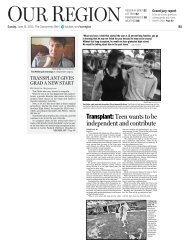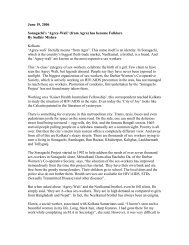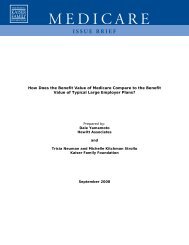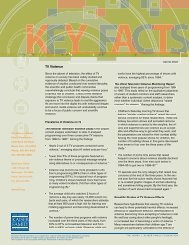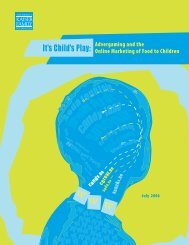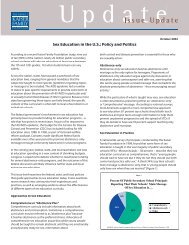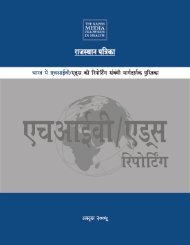HEALTH CARE COSTS: A PRimER - The Henry J. Kaiser Family ...
HEALTH CARE COSTS: A PRimER - The Henry J. Kaiser Family ...
HEALTH CARE COSTS: A PRimER - The Henry J. Kaiser Family ...
You also want an ePaper? Increase the reach of your titles
YUMPU automatically turns print PDFs into web optimized ePapers that Google loves.
Families also are paying more out-of-pocket for health care. Another way of<br />
gauging the burden of rising health costs on households is to look at family medical<br />
out-of-pocket payments. <strong>The</strong>se payments include the medical expenses of the<br />
uninsured and, for the insured, cost sharing (deductibles, coinsurance, and<br />
copayments) for covered services and amounts not paid for by insurance, such as outof-network<br />
balance billing expenses and payments for non-covered services. While<br />
out-of-pocket spending as a share of total national health spending has declined over<br />
time (Figure 9), the actual dollar amounts that families spend for medical services<br />
continue to rise (the reason that the out-of-pocket share of total spending continues to<br />
fall is that the amounts paid by private insurance and government programs have risen<br />
faster than the amounts paid out-of-pocket by families). In 2009, the average<br />
expenses paid out-of-pocket for medical services were $795, an increase of 73% over<br />
the $459 spent in 1996 (Figure 18). Average out-of-pocket expenses were higher for<br />
the elderly ($1,294 in 2009) and those who reported being in poor health ($1,663 in<br />
2009). <strong>The</strong> nonelderly uninsured paid, on average, $862 out-of-pocket in 2009,<br />
compared to $706 for those with private insurance. Those whose poverty status was<br />
negative or poor (below the Federal poverty line, which was $22,050 in 2009 for a<br />
family of 4) paid $638 of their medical expenses out-of-pocket in 2009; for the near<br />
poor (over the poverty line through 125% of the poverty line), it was $840.<br />
Figure 18: Average Out-of-Pocket Health Services<br />
Expenses and Percent Increases, 1996 and 2009<br />
Nonelderly<br />
Uninsured<br />
Nonelderly with<br />
Private Insurance<br />
Below the Federal<br />
Poverty Line<br />
Poverty Line Through<br />
125% of Poverty<br />
Age 65 and Older<br />
Perceived Poor<br />
Health Status<br />
Total<br />
Note: Percents are the percent increase from 1996 to 2009. Dollar amounts and percentages do not include health insurance premiums.<br />
Source: Agency for Healthcare Research and Quality, Medical Expenditure Panel Survey, Table 1.1, Total Health Services Median and Mean Expenses<br />
per Person with Expense and Mean Expenses by Source of Payment, 1996 and 2009,<br />
http://meps.ahrq.gov/mepsweb/data_stats/quick_tables_results.jsp?component=1&subcomponent=0&tableSeries=1&year=-<br />
1&SearchMethod=1&Action=Search.<br />
66%<br />
A recent survey found that more than one in five Americans (21%) were in families<br />
reporting problems paying medical bills in 2010, an increase over the 15% in 2003. 18<br />
<strong>The</strong> 2010 proportion (21%) was similar to the 19% in 2007, which the authors indicate<br />
may be attributable to a decreased use of medical care by people who lost jobs and<br />
health insurance during the 2007-2009 recession and those who reduced their medical<br />
80%<br />
<strong>HEALTH</strong> <strong>CARE</strong> <strong>COSTS</strong>: KEY INFORMATION ON <strong>HEALTH</strong> <strong>CARE</strong> <strong>COSTS</strong> AND THEIR IMPACT<br />
102%<br />
85%<br />
73%<br />
46%<br />
61%<br />
21



